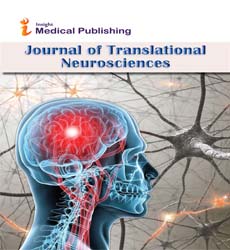Interplay of the Local Immune System and Stem Cells in Regulating Endogenous Epithelial Regeneration
Rosa Gomez Villafuertes *
Department of Biochemistry and Molecular Biology, Universidad Complutense of Madrid, Madrid, Spain
- *Corresponding Author:
- Rosa Gomez Villafuertes
Department of Biochemistry and Molecular Biology, Universidad Complutense of Madrid, Madrid, Spain
E-mail:Rosavillagomez555@yahoo.com
Received date: : August 03, 2022, Manuscript No. IPNBT-22-14669; Editor assigned date: : August 05, 2022, PreQC No. IPNBT-22-14669(PQ); Reviewed date:August 15, 2022, QC No. IPNBT-22-14669; Revised date:: : August 23, 2022, Manuscript No. IPNBT-22-14669 (R); Published date:September 02, 2022, DOI: 10.36648/2573-5349.7.5.002
Citation: Villafuertes RG (2022) Interplay of the Local Immune System and Stem Cells in Regulating Endogenous Epithelial Regeneration. J Transl Neurosc Vol.7 No.5: 002.
Description
Adult stem cells residing in the basal layer of epithelial tissue interact with their niche components and signal to maintain epithelial integrity. The interplay of the local immune system and stem cells in regulating endogenous epithelial regeneration is beginning to be elucidated in several systems. In aged skin, impaired epithelial regeneration is associated with defects in immune-basal cell crosstalk, and inflammation-experienced stem cells retain an epigenetic memory that accelerates subsequent wound healing. Repair of the olfactory epithelium after injury necessarily involves a self-limited inflammatory response to initiate regenerative signals through nuclear factor κB (NF-κB) activation in basal stem cell. These observations suggest an essential role of the local immune system in facilitating epithelial stem cell regeneration. However, persistent inflammation can be deleterious and contributes to a variety of chronic epithelial diseases. How the local immune system interacts with the long-lived stem cells to influence the progression of inflammation and tissue regeneration is largely unknown.
Anatomic Location of OSNs in the Nasal Cavity
The sense of smell is mediated in olfactory epithelium by primary sensory neurons (OSNs) that detect odorants and directly transmit activity to the brain. The anatomic location of OSNs in the nasal cavity renders them directly vulnerable to external environmental insults. Neural stem cells and progenitors, including Horizontal Basal Cells (HBCs) and Globose Basal Cells (GBCs), which reside in the basal layer of olfactory epithelium, possess robust regenerative capacity to replenish OSNs lost throughout life. Recent evidence based on genetic strategies has demonstrated that stem cell intrinsic signals, including transcription factors, contribute to mouse olfactory epithelium regeneration after chemical lesioning. Despite the remarkable regenerative capacity of long-lived olfactory stem cells, human olfactory deficits are common, especially in the setting of chronic inflammation, and the molecular basis remains elusive. Chronic Rhinosinusitis (CRS) is a heterogeneous disease associated with persistent inflammation of the sinonasal mucosa. Affecting approximately 12.5% of the US population, CRS is the most common cause of olfactory dysfunction. The pathogenesis of CRS is multifactorial, but dysregulation of host innate and adaptive immune responses appears to be a common feature. Inflammatory mediators modulate sinonasal epithelial cell innate immune activity, and epithelial cell-derived cytokines have been implicated as driving or sustaining sinonasal inflammation.
Interaction between Olfactory Stem Cells and Immune System
Human chronic olfactory inflammation is typically associated with CRS and characterized by local immune cell infiltration and inflammatory mediator production, loss of sensory neurons, and decreased olfactory function. We observed in a mouse genetic model that chronic olfactory mucosal inflammation results not only in olfactory neuronal depletion but also in impaired neurogenesis. This finding indicates that interaction between olfactory stem cells and immune system might critically underlie ongoing olfactory impairment in CRS. Although olfactory mucosa possesses long-lived horizontal basal stem cells (HBCs) and remarkable regenerative capacity, the function of human olfactory neuroepithelium is significantly impaired in chronic inflammatory rhinosinusitis. Here, we show that, while inflammation initially damages olfactory neurons and activates HBC-mediated regeneration, continued inflammation locks HBCs in an undifferentiated state. Global gene expression in mouse HBCs reveals broad upregulation of NF-κB-regulated cytokines and chemokines including CCL19, CCL20, and CXCL10, accompanied by enhancement of stemness related transcription factors. Loss-of-function studies identify an NF-κB-dependent role of HBCs in amplifying inflammatory signaling, contributing to macrophage and T cell local proliferation. Chronically activated HBCs signal macrophages to maintain immune defense and prevent Treg development. In diseased human olfactory tissue, activated HBCs in a P63+ undifferentiated state similarly continribute to inflammation through chemokine production. These observations establish a mechanism of chronic rhinosinusitis-associated olfactory loss, caused by a functional switch of neuroepithelial stem cells from regeneration to immune defense.
Open Access Journals
- Aquaculture & Veterinary Science
- Chemistry & Chemical Sciences
- Clinical Sciences
- Engineering
- General Science
- Genetics & Molecular Biology
- Health Care & Nursing
- Immunology & Microbiology
- Materials Science
- Mathematics & Physics
- Medical Sciences
- Neurology & Psychiatry
- Oncology & Cancer Science
- Pharmaceutical Sciences
